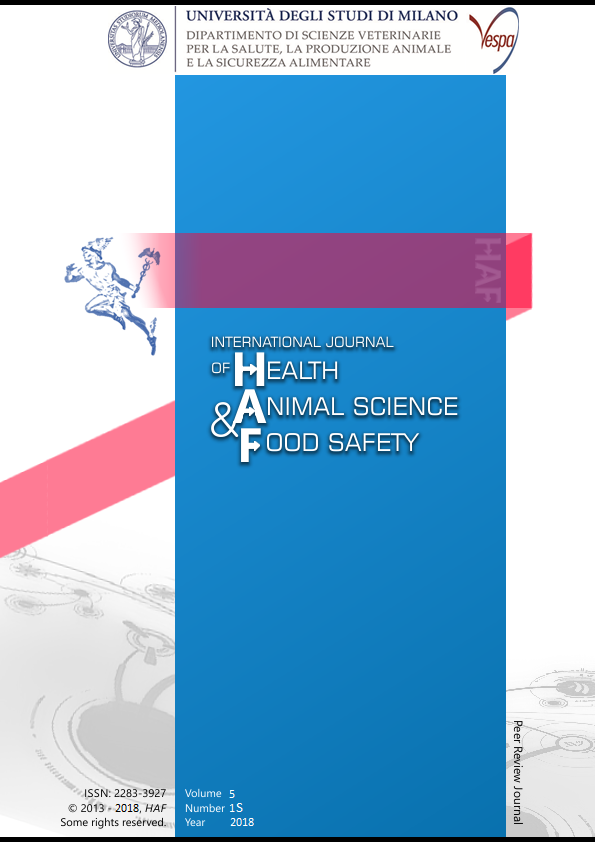Abstract
The Italian goat autochthonous breeds are appreciated for their milk and characteristics, especially for the rusticity, frugality, fertility and longevity. For these reasons the local goat breeds play an important role in the livestock sector, and it is important to guarantee sanitary strategies control, prevention or treatment of diseases. It is well known that the hematological parameters in goats undergo changes in relation with many factors like breed, age (Piccione et al. 2014), physiological/reproductive status environmental factors and stress (Waziri M.A. et al. 2010). Based on these differences it is necessary to establish appropriate physiological baseline values for every single breed which could be used in the realistic evaluation physiological or pathological status of the animal (Arfuso et al. 2016). The aim of this work was to evaluate the differences between a local goat breed (Verzasca) and a cosmopolite one (Alpine) from the hematological point of view, and to establish hematological reference values. A total number of 71 female goats, of Alpine (n=37), and Verzasca (n=34) were enrolled for this study, for a total of 716 blood samples. Data were processed by a mixed model-repeated measures ANCOVA in order to evaluate the effects of breed, parity, and season, while baseline values for each breed have been calculated by evaluating the 2.5-97.5th percentile of variables distribution.
The results showed that the breeds differ in a significant manner (Table 1). Verzasca goat shows significantly higher values in the erythroid parameters, whereas the Alpine goat shows higher mean values of leucocyte count and absolute neutrophil count. A further interesting result is the neutrophil lymphocyte ratio which is 0.96 in the Alpine and 0,57 in the Verzasca.
The results here presented can add some knowledge to the definition of the health status of the two breeds, evidencing some environmental and physiological variation mechanisms.
Riferimenti bibliografici
Arfuso F., Fazio F., Rizzo M., Marafioti S., Zanghì E., Piccione G., 2016. Factors affecting the haematological parameters in different goat breeds from Italy. Annals of Animal Science. 16, 743-757.
Piccione G., Monteverde V., Rizzo M., Vazzana I., Assenza A., Zumbo A., Niutta P.P., 2014. Reference intervals of some electrophoretic and haematological parameters in Italian goats: comparison between Girgentana and Aspromontana breeds. Journal of Applied Animal Research. 42, 434–439.
Waziri M.A., Ribadu A.Y., Sivachelvan N., 2010. Changes in the serum proteins, hematological and some serum biochemical profiles in the gestation period in the Sahel goats. Veterinarski Arhiv 80, 215-224.
This work is licensed under a CC BY-SA 4.0 international

